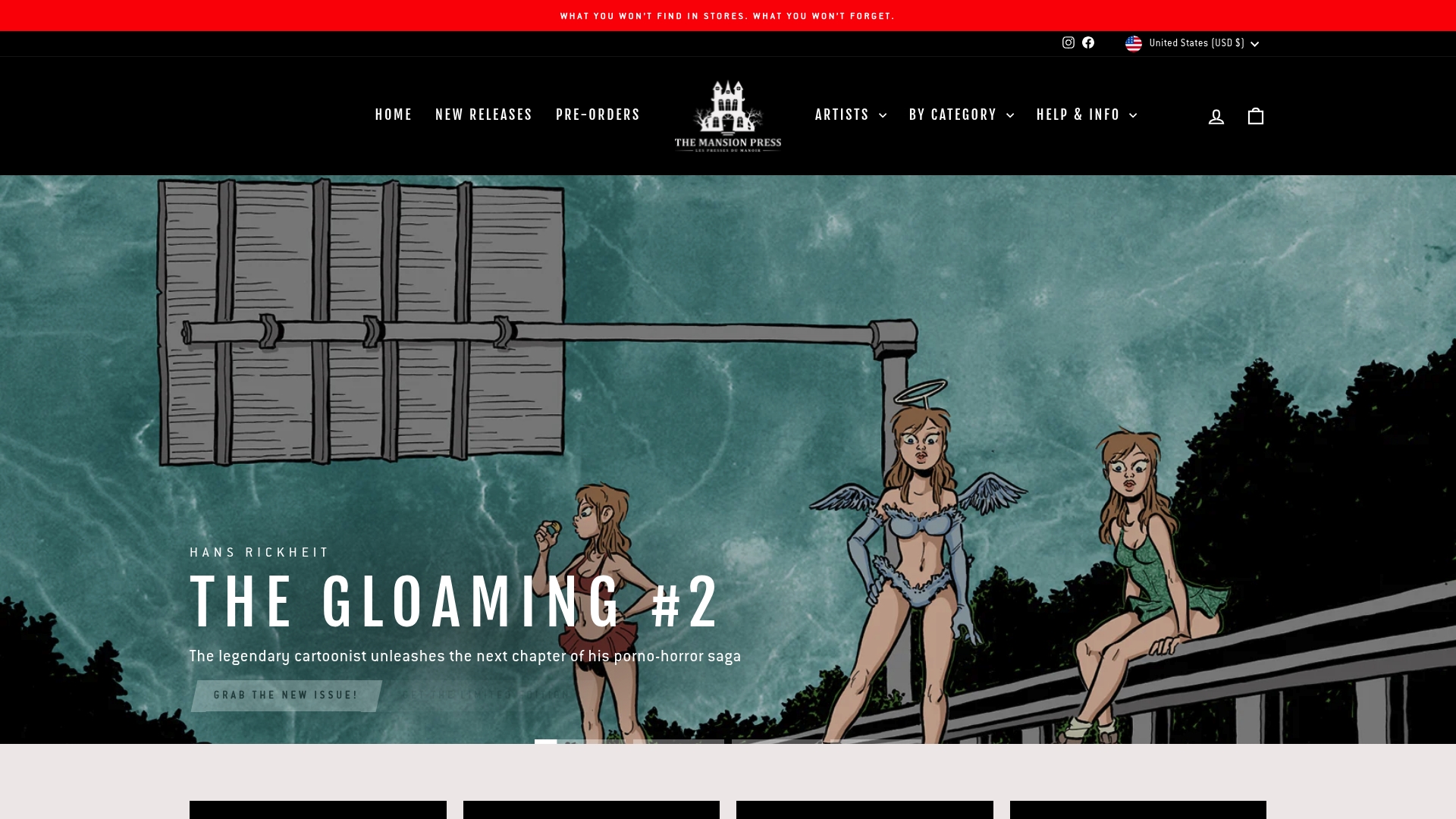Complete Guide to Surreal Comic Art Styles
Did you know that more than 60 percent of modern graphic novelists experiment with surreal elements in their work? Surreal comic art captures the imagination with its dreamlike visuals and mind-bending stories, pulling readers into worlds where logic gives way to emotion. This unique style blends psychology, art history, and bold visual techniques to offer a striking alternative to traditional comics.
Table of Contents
- Defining Surreal Comic Art Styles
- Major Types and Artistic Influences
- Key Visual Elements and Techniques
- Notable Surreal Comic Artists Worldwide
- Collecting, Preserving, and Valuing Surreal Comics
Key Takeaways
| Point | Details |
|---|---|
| Surreal comic art challenges perception | By employing abstract imagery and non-linear storytelling, surreal comics invite deeper introspection and exploration of consciousness. |
| Key styles offer unique perspectives | Major styles like visionary, pop, dark, and organic surrealism each provide distinct avenues for visual and psychological exploration. |
| Innovative techniques enhance narratives | Techniques such as spatial warping and chromatic destabilization serve to disrupt traditional storytelling and create emotional engagement. |
| Value in collecting surreal comics extends beyond art | Collectors focus on authenticity, historical context, and proper preservation techniques to appreciate the cultural significance of surreal comics. |
 |
|
Defining Surreal Comic Art Styles
Surreal comic art represents a bold and boundary-pushing visual narrative style that transcends traditional storytelling constraints. According to globalartcommunity, surrealism involves transcendent experiences that aim to provoke introspection by inviting viewers to explore deeper layers of consciousness.
This artistic approach blends dreamlike imagery, unexpected visual juxtapositions, and psychological symbolism to create narratives that challenge viewers’ perceptual expectations. Artists working in surreal comic styles deliberately disrupt linear storytelling, using abstract representations that blend reality with imagination. The goal is not just visual entertainment, but a profound exploration of subconscious mental landscapes.
Key characteristics of surreal comic art include:
- Distorted human forms and impossible anatomical configurations
- Dreamscape environments that defy physical laws
- Symbolic imagery drawn from psychological archetypes
- Color palettes that emphasize emotional states rather than realistic representation
- Narrative structures that prioritize emotional truth over literal chronology
By Understanding Surrealism in Graphic Novels, artists transform comics from mere sequential art into powerful vehicles for psychological exploration. These works invite readers to question their understanding of reality, perception, and the boundaries between conscious and unconscious experience.
Major Types and Artistic Influences
According to globalartcommunity, surreal art encompasses diverse styles that offer unique perspectives on reality and imagination. These variations include visionary surrealism, pop surrealism, dark surrealism, and organic surrealism, each representing a distinct approach to challenging perceptual boundaries.
Here’s a summary of the major surreal comic art styles and their core features:
![]()
| Style | Key Characteristics | Common Influences |
|---|---|---|
| Visionary Surrealism | Spiritual themes Metaphysical scenes |
Jungian psychology Transcendence |
| Pop Surrealism | Pop culture motifs Playful colors |
Animation Modern media |
| Dark Surrealism | Haunting imagery Psychological depth |
Dreams Expressionism |
| Organic Surrealism | Nature forms Morphing structures |
Biological patterns Biomorphism |
Visionary surrealism focuses on transcendental and spiritual experiences, often depicting metaphysical landscapes that blur the lines between consciousness and dream states. Pop surrealism, conversely, incorporates contemporary pop culture elements, using vibrant colors and playful imagery to subvert traditional narrative structures. Dark surrealism explores psychological shadows, presenting haunting and emotionally charged visual narratives that probe the depths of human subconsciousness.
Some key artistic influences shaping surreal comic art include:
- Psychological theories of Carl Jung and Sigmund Freud
- Dadaist and early 20th-century avant-garde art movements
- Dreams and unconscious mental imagery
- Philosophical concepts of perception and reality
- Influences from cinema, particularly German Expressionist techniques
Understanding Avant-Garde Comic Art Styles reveals how these diverse surreal approaches challenge traditional storytelling, transforming comics into powerful mediums for exploring complex psychological and philosophical themes.
Key Visual Elements and Techniques
According to LinkedIn, experimental techniques in surreal comic art push the boundaries of traditional visual storytelling through innovative rendering methods. These techniques include cutting-edge approaches like glitch art with digital distortions and rotoscope-inspired semi-realistic rendering, which offer unique ways to visualize complex and unconventional narrative ideas.
Surreal comic artists employ a range of sophisticated visual strategies to disrupt traditional perception. These techniques include deliberate spatial warping, where physical dimensions are manipulated to create impossible geometries, and chromatic destabilization that uses unexpected color palettes to challenge viewers’ sensory expectations. The goal is to create visual experiences that transcend linear narrative logic, inviting viewers to engage with the artwork on a more intuitive, emotional level.
Key visual elements in surreal comic art encompass:
- Metamorphic character transformations
- Non-linear spatial representations
- Symbolic object manipulation
- Layered psychological imagery
- Fragmented and recursive visual motifs
What Is Visual Storytelling? Complete Guide for Artists provides deeper insights into how these unconventional techniques transform comics from mere sequential art into profound psychological landscapes that challenge traditional storytelling conventions.
Notable Surreal Comic Artists Worldwide
In the expansive world of surreal comic art, artists like Todd Schorr represent the pinnacle of imaginative storytelling. According to Wikipedia, Schorr is a prominent American artist within the pop surrealism movement, masterfully combining cartoon-influenced visuals with highly polished techniques to create intricate narratives that offer profound social satire and personal worldviews.
Another remarkable artist pushing the boundaries of surreal comic art is Tsukumizu, a Japanese manga creator known for deeply poetic and heartwarming works. As Wikipedia describes, Tsukumizu’s creations like ‘Girls’ Last Tour’ and ‘Shimeji Simulation’ demonstrate a unique artistic vision influenced by diverse artists such as Tsutomu Nihei and Paul Klee, blending surreal imagery with emotional depth and philosophical undertones.
Key characteristics of these groundbreaking surreal comic artists include:
- Blending multiple artistic influences
- Creating complex narrative landscapes
- Challenging traditional visual storytelling
- Incorporating social commentary
- Exploring psychological and emotional terrains
7 Notable Cult Comic Authors Every Fan Should Know offers further exploration into the fascinating world of artists who continuously redefine the boundaries of visual narrative and surreal expression.
Collecting, Preserving, and Valuing Surreal Comics
Surreal comic art collecting represents a nuanced world where artistic value intersects with historical preservation. According to thecollectorhub, certain styles like noir and heavy shadow comics, exemplified by works such as ‘Sin City’ and ‘Hellboy’, have become highly collectible due to their unique aesthetic and distinctive storytelling approach.
The value of surreal comics extends beyond mere monetary worth, encompassing cultural significance and artistic innovation. Collectors seek out rare pieces that challenge traditional narrative structures, with limited edition prints and original artworks from groundbreaking artists commanding premium prices. Preservation requires specialized techniques, including archival-quality storage, controlled environmental conditions, and minimal handling to maintain the intricate details and delicate nature of surreal comic art.
Key considerations for serious surreal comic collectors include:
- Authenticity and provenance verification
- Understanding artist significance and historical context
- Proper storage and conservation techniques
- Tracking market trends and emerging artists
- Maintaining comprehensive documentation
Understanding Collecting Rare Comics Guide for Enthusiasts offers in-depth insights for collectors looking to build a meaningful and valuable surreal comic art collection that celebrates the genre’s profound artistic expression.
Discover and Own Surreal Comic Art That Speaks to You
Exploring surreal comic art styles reveals a world of dreamlike imagery and profound psychological landscapes. Yet finding authentic creations that capture this unique blend of imagination and emotional depth can be a real challenge. Whether you seek visionary surrealism or dark surrealist narratives, it is essential to access original works and limited editions that truly reflect the genre’s innovative spirit.

Step into a curated collection of surreal comics, artbooks, and exclusive pieces at The Mansion Press. Connect with independent artists pushing boundaries and browse visually stunning releases designed to provoke thought and emotional resonance. Don’t miss the chance to add rare surreal comic art to your collection today. Visit The Mansion Press and experience a new level of art collecting that honors the complexity and beauty of surreal storytelling.
Explore expert insights on understanding surrealism in graphic novels and expand your appreciation with notable cult comic authors. Your journey into surreal comic art begins here.
Frequently Asked Questions
What are the key characteristics of surreal comic art?
Surreal comic art is characterized by distorted human forms, dreamscape environments, symbolic imagery, emotional color palettes, and narrative structures that prioritize emotional truth over linear chronology.
How does surrealism influence comic storytelling?
Surrealism influences comic storytelling by challenging traditional linear narratives, inviting readers to explore psychological depths and subconscious landscapes through dreamlike imagery and unexpected visual juxtapositions.
What are the main types of surreal comic art styles?
The main types of surreal comic art styles include visionary surrealism, pop surrealism, dark surrealism, and organic surrealism, each representing unique approaches to blending reality with imagination and addressing various themes.
What techniques do surreal comic artists use to create their works?
Surreal comic artists use techniques such as spatial warping, chromatic destabilization, metamorphic character transformations, and layered psychological imagery to disrupt traditional visual storytelling and engage viewers on an emotional level.

